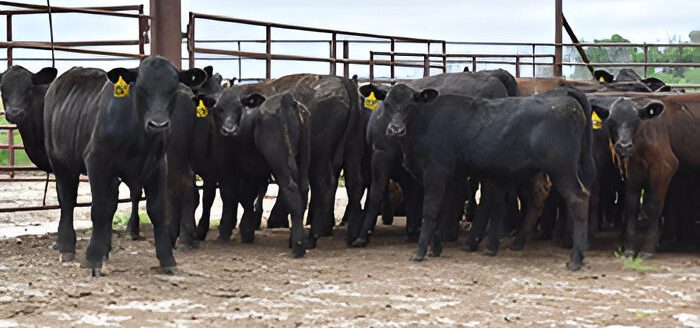3 steps to take for a more productive new year on your operation

Now is the time to conduct a year-in-review with your herd health veterinarian
Help progress your operation forward into the New Year. It’s really important to make a conscious effort to analyze this past year’s herd health and objectively reflect on what worked and what didn’t. Doing so will help guide decisions for an even better year ahead and maximize the success of your operation from an animal health perspective.
Now is the time to have these conversations—you really don’t want to be discussing your neonatal calf health plan when you have three scouring calves on your mudroom floor in January.

During what I refer to as the ‘offseason’ for veterinarians—when the dust settles on fall work—is the best time for you and your veterinarian to invest time in planning for the coming year. Now is the ideal time to have these conversations, not when you’re in the middle of a herd health outbreak or are running on fumes during the heat of calving season.
Having two-way communication is the foundation to a productive veterinarian-client-patient relationship. With that in mind, let’s go over the three steps I feel are invaluable.
Step 1: Review outcomes from the previous year’s health protocol, successes and any room for improvement.
Telling your veterinarian about any issues you are facing will allow them to help you address those concerns and solve problems. To enhance your operation’s overall health and profitability, here is a quick checklist of things I feel should be evaluated every year.
Cow herd
- Conception rate from the previous year compared to others
- Reproductive goals for the herd and whether they were met
- Any increased rate of abortions or stillbirths
- Level of body condition
- Any increase in diseases, such as pinkeye or foot rot
Calf crop
- Overall neonatal health; mortality, sickness, response to treatment, vigor, etc.
- Any specific disease challenges, such as summer pneumonia while out on pasture
- Calf performance, including weaning weight
- If you retained ownership, how calves performed at the next sector of the industry
- Any feedback from buyers relating to calf health, all the way to the rail or breeding
Overall herd health protocol (vaccinations, deworming and antibiotics)
- Efficacy of programs based on year’s performance
- Any adjustments you feel may be needed
- Administration logistics and timing
- Whether the first line of antibiotic treatment remains effective, or if any additional treatment options were necessary
- Any new marketing strategies that may impact the program, for example moving to an all-natural program
Step 2: Explore new technologies available on the market, and outline any questions you may have for your veterinarian.
As veterinarians, we want to be a resource for you and we hope that you feel comfortable coming to us with questions. Because of this, I feel inquiry is another important aspect of this conversation with your veterinarian. This is a good time to share whatever is top of mind for you as a producer. Maybe you have heard about a new technology; speak with your veterinarian about their opinion. Could it be a good fit for your program and is it cost effective? Prep a list of questions you may have about the science behind it while you have that expert in the room.
In addition to asking about any new technologies in the market, inquire about any new research. Things are constantly evolving, especially in the arena of immunology. Employing evidence-based medicine is paramount for any operation to help ensure herd health and productivity. It’s important to sit down and find out if we have learned anything new in the past year that might alter your current plan.
Asking us questions is not a hindrance by any means – we want to help. The clients that I enjoy working with the most are the ones who push me to continually raise the bar. They are the ones who ask the hard questions and are constantly wanting to do better.
Step 3: Develop a plan for the coming year, or make any adjustments necessary to the previous year’s plan, to ensure success and positive strides.
So, you have reviewed the past year’s wins and losses, and you have talked about potential new technologies with your veterinarian. Now, in the final component of the discussion, utilize all of this information to develop a plan for the upcoming year, if you did not have a protocol in place – or make any necessary changes to the previous year’s plan to better serve you moving forward.
I encourage you to walk away from this process with actionable tasks; you don’t want to let those ideas and the enthusiasm that you have for your program fizzle out after the meeting. Have some actionable items such as three main goals we are going to try to improve upon this year, here’s how we’re going to do it and when.
To make things easier on you both, adhering to schedules and timelines, go ahead and look to calendars to schedule out important herd work with your veterinarian.
One last thought is that having this nice, beautiful herd health plan provides a great baseline to guide us. But, keep in mind that things can happen, challenges can arise that we cannot foresee, and we have to be willing to be adaptable and pivot. Having this baseline will help to guide you, help you remain profitable and help to maximize animal health.
I encourage producers to ask questions and to not blindly adhere to a protocol just because it’s the way we have always done it. Review outcomes, ask questions and work closely with your veterinarian in a year-in-review to ensure a more productive year ahead.



